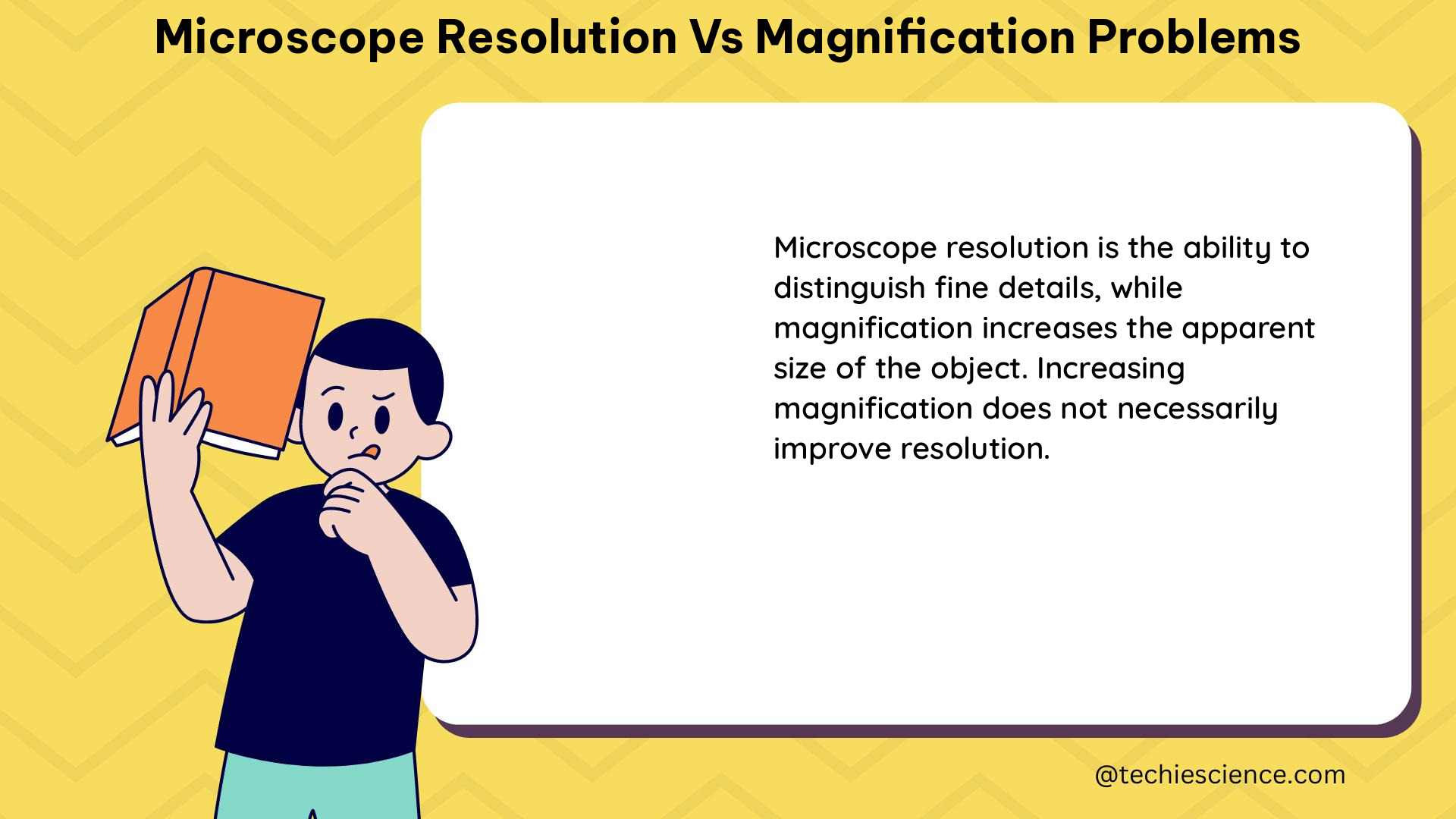Microscopes are essential tools in the field of physics, enabling researchers to observe and analyze microscopic structures and phenomena. However, understanding the concepts of resolution and magnification is crucial for effectively utilizing these instruments. In this comprehensive guide, we will delve into the intricacies of microscope resolution and magnification, providing physics students with a detailed and practical understanding of these fundamental principles.
Understanding Magnification
Magnification is the process of enlarging an image without changing its physical size. It is typically expressed as a ratio of the apparent size of the specimen in the image to its actual size. For example, a magnification of 5000x means that the image length is 5000 times larger than the scan length.
The magnification of a microscope is determined by the combination of the objective lens and the eyepiece (ocular) lens. The total magnification is the product of the magnification of the objective lens and the magnification of the eyepiece lens. For instance, if the objective lens has a magnification of 40x and the eyepiece lens has a magnification of 10x, the total magnification would be 400x.
Exploring Resolution

Resolution, on the other hand, refers to the ability of an imaging system to distinguish between closely spaced objects. It is typically measured in terms of the minimum distance between two distinct points that can still be distinguished in an image, known as the Rayleigh criterion.
The theoretical resolution limits of a microscope are determined by the wavelength of light used and the numerical aperture (NA) of the objective lens. The Abbe diffraction formula for lateral (XY) resolution is:
$d = \frac{\lambda}{2NA}$
where $\lambda$ is the wavelength of light and $NA$ is the numerical aperture of the objective lens.
For example, if we use a green light of 514 nm and an oil-immersion objective with an NA of 1.45, the theoretical limit of lateral resolution will be:
$d = \frac{514 \text{ nm}}{2 \times 1.45} = 177 \text{ nm}$
Similarly, the axial (Z) resolution can be calculated using the formula:
$d = \frac{2\lambda}{NA^2}$
For the same example, the axial resolution will be:
$d = \frac{2 \times 514 \text{ nm}}{1.45^2} = 488 \text{ nm}$
Practical Resolution Considerations
In practice, the measurable resolution of a microscope is affected by various factors such as the signal-to-noise ratio (SNR), the quality of the optics, and the sample itself. The full width half maximum (FWHM) of the point spread function (PSF) is often used to measure the practical resolution. The FWHM can be calculated using the formula:
$R_{FWHM} = 0.51 \frac{\lambda}{NA}$
For the same example, the FWHM will be:
$R_{FWHM} = 0.51 \frac{514 \text{ nm}}{1.45} = 181 \text{ nm}$
Comparing Magnification and Resolution
While magnification is useful for visualizing details, it does not directly affect the resolving power of a microscope. Increasing the magnification without improving the resolution will not allow for the distinction of smaller features. On the other hand, increasing the resolution by using a shorter wavelength of light or a higher NA objective lens will enable the distinction of smaller features, even at lower magnifications.
Example Calculations
To illustrate the differences between magnification and resolution, let’s consider the following examples:
Magnification Example:
– Objective lens: 40x
– Ocular lens: 10x
– Total magnification: 400x
– Resolution: Not affected by magnification
Resolution Example:
– Wavelength of light: 400 nm
– NA of objective lens: 1.45
– Theoretical resolution: 177 nm (lateral), 488 nm (axial)
– Practical resolution (FWHM): 181 nm
Key Takeaways
- Magnification is the process of enlarging an image without changing its physical size.
- Resolution is the ability of an imaging system to distinguish between closely spaced objects.
- Theoretical resolution limits are determined by the wavelength of light and the numerical aperture of the objective lens.
- Practical resolution is affected by various factors such as the signal-to-noise ratio and the quality of the optics.
- Increasing magnification without improving resolution will not allow for the distinction of smaller features.
By understanding the fundamental differences between magnification and resolution, physics students can effectively utilize microscopes to observe and analyze microscopic structures and phenomena with greater precision and accuracy.
References
- Biology LibreTexts. (2022). 3.1D: Magnification and Resolution. Retrieved from https://bio.libretexts.org/Bookshelves/Microbiology/Microbiology_%28Boundless%29/03:_Microscopy/3.01:_Looking_at_Microbes/3.1D:_Magnification_and_Resolution
- Leica Microsystems. (n.d.). Microscope Resolution: Concepts, Factors and Calculation. Retrieved from https://www.leica-microsystems.com/science-lab/life-science/microscope-resolution-concepts-factors-and-calculation/
- NCBI. (2013). Relationship between magnification and resolution in digital pathology. Retrieved from https://www.ncbi.nlm.nih.gov/pmc/articles/PMC3779393/
- Nanoscience. (n.d.). Understanding the Difference between Magnification and Resolution in Scanning Electron Microscopy. Retrieved from https://www.nanoscience.com/blogs/understanding-the-difference-between-magnification-and-resolution-in-scanning-electron-microscopy/

The lambdageeks.com Core SME Team is a group of experienced subject matter experts from diverse scientific and technical fields including Physics, Chemistry, Technology,Electronics & Electrical Engineering, Automotive, Mechanical Engineering. Our team collaborates to create high-quality, well-researched articles on a wide range of science and technology topics for the lambdageeks.com website.
All Our Senior SME are having more than 7 Years of experience in the respective fields . They are either Working Industry Professionals or assocaited With different Universities. Refer Our Authors Page to get to know About our Core SMEs.